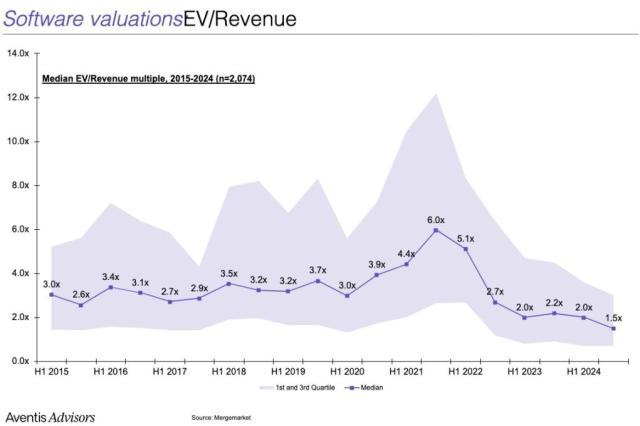Original Author: Ethereum Core Developer Eric Conner
Introduction: The Rise of ETH Treasury Model
On July 17, 2025, Eric Conner, a veteran Ethereum observer, posted on X platform, pointing out that the ETH treasury strategy is rapidly becoming a market focus. He wrote: "There have been many recent discussions about the ETH treasury strategy, which is worth carefully breaking down its meaning and background." In his view, this trend represents a paradigm shift in corporate financial strategy - more and more listed companies are imitating MicroStrategy's path, beginning to raise funds to purchase ETH and generate income through staking. These companies not only value ETH's profitability and deflationary characteristics but are also exploring a new type of capital structure and growth model with on-chain assets.
This article will systematically deconstruct the underlying logic, operational paths, potential risks, and development prospects of the ETH treasury strategy.
Why ETH? The Core Logic Behind Treasury Preference
Conner proposed four core reasons why ETH is favored by treasuries:
- Staking rewards rate between 3%-5%;
- Deflationary mechanism (EIP-1559 burn offsetting issuance);
- GAAP standards allow fair value accounting;
- ETH is the primary collateral asset in DeFi.
He pointed out that Ethereum's Proof of Stake mechanism provides stable annualized returns, while the burn mechanism introduced by EIP-1559 brings deflationary expectations, enhancing ETH's "value storage" role. Additionally, the latest revision of US accounting standards GAAP allows companies to record ETH at market value, reducing financial reporting distortion risks. Finally, ETH's position as a DeFi collateral is almost irreplaceable, further strengthening the security and liquidity of its asset layer.
Operational Path: How Enterprises Deploy ETH Treasury Strategy
Conner succinctly summarized the execution path for such enterprises:
"Typical mode: Raise funds through ATM or PIPE, buy ETH OTC, stake (self-held or through Lido, Rocket Pool, custodian), accompany with PR releases, cycle staking rewards, or re-mortgage staked assets for lending and reinvestment."
This strategy integrates the financing mechanism of capital markets with the native asset yield logic of crypto, forming a highly financialized, on-chain driven "reinvestment flywheel": enterprises first raise funds to purchase ETH, use staking to generate rewards, then amplify the asset pool through reinvestment or lending, creating a growth cycle. Simultaneously, by publicizing this layout, they may also gain additional secondary market attention and premium.
Risk Exposure: Price Volatility and Regulatory Compliance
Conner did not overlook the potential risks:
"Key risks include: ETH price volatility, validator node Slashing, potential SEC investment company classification, and 7-day staking unlock period lacking flexibility."
ETH's price instability is a major challenge for companies holding it as a treasury asset; the "punitive reduction" in the staking mechanism could also bring actual asset losses. Moreover, if enterprises overly rely on investment-type returns, they might touch the "investment company" regulatory red line under US securities law. Compared to OTC market liquidity, staked assets require a 7-day waiting period for withdrawal, which weakens short-term liquidity scheduling capabilities.
Who's Taking the Lead? Overview of Top Treasury Enterprises
As of July 2025, Conner provided the current enterprises leading this strategy:
- SharpLink (SBET): Holding 285,000 ETH (staking rate as high as 99%);
- BitMine (BMNR): 163,000 ETH;
- BitDigital (BTBT): 101,000 ETH;
- BTCS: 29,000 ETH.
These enterprises collectively control over 600,000 ETH, forming a considerable on-chain treasury cluster. Among them, SharpLink leads the industry trend with its high staking rate and largest volume, becoming one of the most representative enterprises in "Ethereum treasurization".
Reward Reinvestment Strategy: From Staking Rewards to Leveraged Operations
Conner noted that most enterprises directly reinvest staking rewards to further accumulate ETH. "Some enterprises use staked ETH (like stETH) as collateral to borrow stablecoins for operational turnover or leveraged allocation." This strategy can improve capital efficiency and provide more flexible financial operations, but simultaneously introduces new variables such as interest rate fluctuations and liquidation risks.
Opportunity Scale: How Much Potential Do Institutions Have for ETH Allocation?
Conner used a set of comparative data to emphasize the growth potential of the ETH treasury strategy:
"The total cash reserves of S&P500 are about 22 trillion USD. If just 1% is converted to ETH allocation, it would be equivalent to 65 million ETH, more than half of the current total supply. In reality, current enterprise treasury allocation is less than 0.5% of this volume."
In other words, the penetration rate of the ETH treasury strategy is still in an extremely early stage. Once traditional enterprises or institutions increase their allocation efforts, it could potentially cause structural impacts on ETH's price and financial status at the supply and demand level.
Key Variables Investors Should Watch
Conner reminded that investors should focus on the following observation points:
- Dilution calculation situation;
- Safety and compliance of staking service providers;
- How the company's board participates in ETH governance voting;
- Whether L2 layer reStaking strategies are included in future plans.
These factors will not only affect enterprise financial performance but also influence their actual impact in Ethereum network governance and ecosystem.
Future Outlook
Conner predicted that as ETH's financial attributes become clearer, more industries will follow this strategy:
"In the future, not just miners, but some SaaS companies and even biotechnology enterprises might start adopting on-chain treasury allocation due to ETH's financial advantages and yield attributes."
The ETH treasury strategy is gradually moving from marginal experimentation to mainstream consensus, potentially reshaping the structural logic of corporate balance sheets.
Conclusion: An Innovation in Treasury Structure
The ETH treasury strategy represents not just a change in asset allocation logic, but an active absorption of crypto-native characteristics by corporate financial structures. Integrating the transparency, programmability, and yield of on-chain assets, it is leading a structural transformation "from crypto-native to financial mainstream".
As Conner jokingly said: "Feel free to forward this article to CFOs who are still calling ETH an 'internet magic coin'."
Recommended Reading:
US House Passes Three Crypto Bills: How Are National Team Bitcoin Chips Doing?
"Meme 2.0" Beginning? Pump.fun and the Future Path of On-chain Financing





